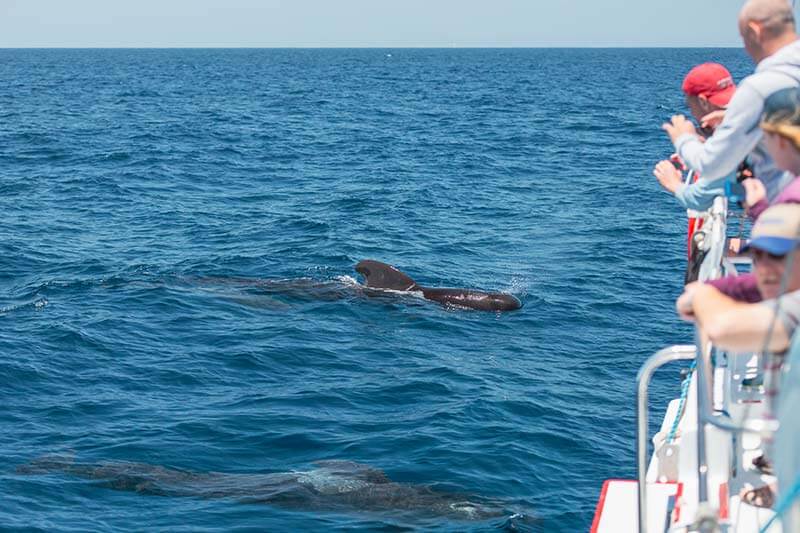Fast Facts
Scientific name: Globicephala macrorhynchus
Class: Mammalia
Average length: Up to 24 feet. Males are larger than females.
Average weight: Up to 3 tons (6,000 pounds)
Average lifespan: 35 to 60 years
Current population: About 800 off the U.S. West Coast. The East Coast has about 21,500 animals and the Hawaiian Islands has around 9,000.
Gestation period: About 15 months
Pilot Whales: Dive Deeper
Along the coast of Southern California, an abundant amount of marine mammals touch down in the nutrient-dense waters that hug our coastline. These animals swim, leap, and dive, bringing joy and excitement into our lives, as they satisfy our curious craving to catch a glimpse of their breathtaking beings. One sea creature that can be spotted is an incredibly unique and astonishing mammal known as the Short-Finned Pilot Whale.
Short-finned pilot whales, scientifically known as Globicephala macrorhynchus, are members of the dolphin family and one of the second largest, following the killer whale. Although there are two different species of pilot whales, such as the short-finned and long-finned pilot whale, the Dana Point, California, waters are most familiar with the short-finned pilot whale species.
This particular species has us breaching for joy over all of its fun pilot whale facts and we’re excited to share them with you!
Appearance
The short-finned pilot whale is a dark brown or black colored mammal, with a large bulbous melon-headed shaped cranium. They have no distinguishable beak, making them somewhat unique to other dolphins such as the common or bottlenose dolphins. The pilot whale size is also unique from other dolphins as their body stretches to lengths of up to 12 to 24 feet, with a dorsal fin that rests fairly far forward on its back from its long base. How much does a pilot whale weigh? Pilot whales weight up to 6,600 pounds, with males larger than females.
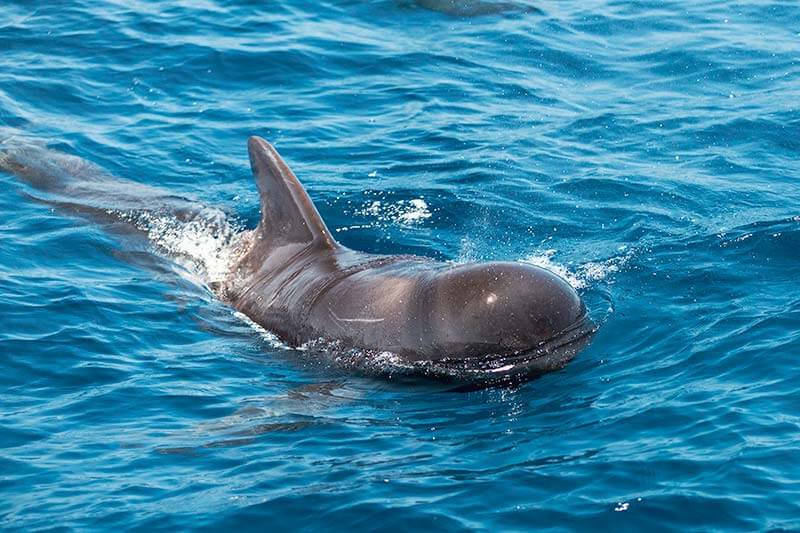
These distinct white bands are also present on the dwarf minke whale which measures in at around 26 feet and weighs nearly 14,000 pounds. Dwarf minke whales are dark in color, with a half-collar that reaches around the head and stretches to the throat grooves. Distinguished from other minke whales, this particular subspecies has a bright white patch on its upper pectoral fin which extends to the back and shoulder area.
The Antarctic minke whale is also generally dark-colored, with solid gray pectoral flippers that have a white-colored edge. Different from other minke whales, the antarctic species does not have the distinctive white bands that are present on the common northern minke whale and dwarf minke whale.
Feeding Habits
Being the second-largest dolphin with a weight of over 6,000 pounds, one may ask, what do pilot whales eat? Pilot whales prefer a diet of squid, making them frequent swimmers in deep sea waters where they dive to depths of up to 1,000 feet where their prey love to hang about. They also consume other prey such as fish.
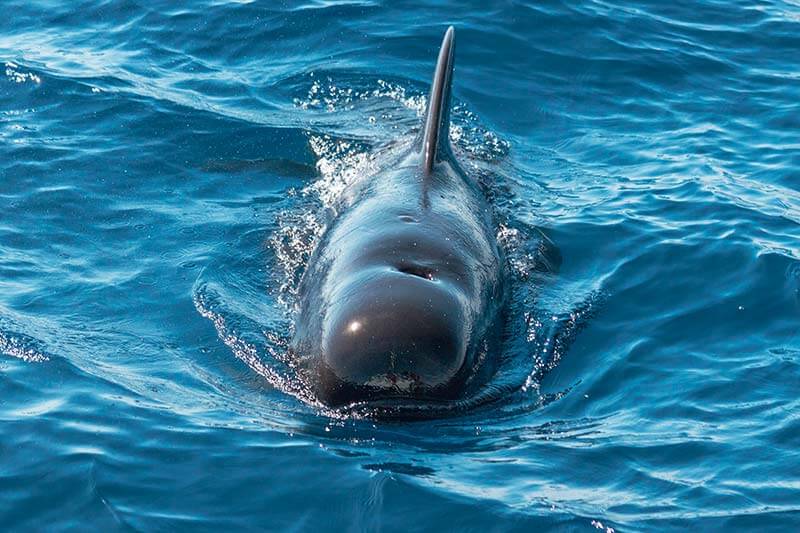
Where are Short-finned Pilot Whales Found?
Short-finned pilot whales are found all around the world’s oceans, in both tropical and temperate waters that range from the North Atlantic to the southern hemisphere. Because of their taste in dining, they prefer areas where they can snatch up squid. Where the squid is, the whales go, leading them into habitats that are farther away from shore in deeper waters.
Closer to home, these whales can be found along the east and west coast in the United States, as well as the aloha islands of Hawaii.
Pilot whales were once commonly seen in the waters of Southern California, but due to a strong El Nino through the years of 1982 and 1983, the short-finned pilot whales disappeared from the area, leaving only a small number of 800 members in the west coast stock of whales. Nearly 22,000 individuals live in the east coast stock, and 9,000 in the Hawaiian, making them somewhat depleted in some areas, but not at risk.
Worldwide, both the short-finned and long-finned pilot whales reach great numbers. Their numbers reach upwards of one million long-finned pilot whales and 200,000 short-finned pilot whales.
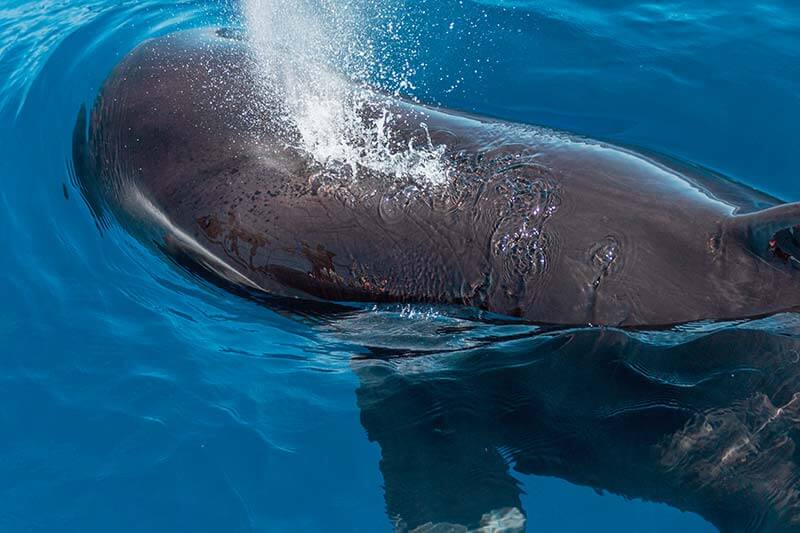
Short-finned Pilot Whale Mating and Calves
Short-finned pilot whales are extremely close-knit, intelligent, and social species, living in long-term stable groups of 15 – 100 individuals. These groups are comprised of close family members, with relationships that were formed since birth. When born, short-finned pilot whales weigh over 200 pounds and stretch to lengths of up to 6 feet. They nurse for at least two years, but some calves who are born last to their mothers may be nursed for up to 15 years.
They reach sexual maturity at or around 10 years of age, and females tend to give birth every 5 to 8 years. In comparison to younger females, older females do not give birth as often, most likely due to their age.
These female pilot whales live to 60 years of age, whereas male pilot whales live to 45.
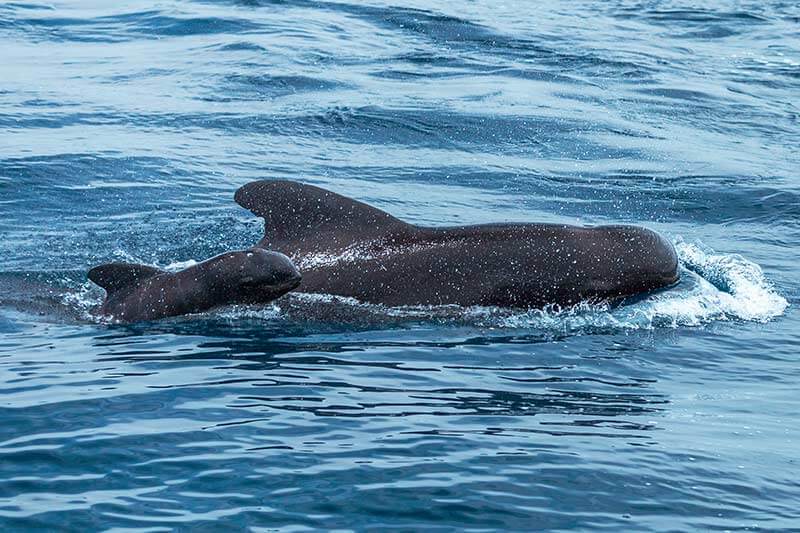
Are Short-finned Pilot Whales Endangered?
Though their numbers are less in the west coast area, and somewhat small in comparison to other similar species in the cetacean family, the short-finned pilot whale’s conservation status is not endangered. They are protected under the Marine Mammal Protection Act, but sadly they are still introduced to a variety of threats that harm their well-being. These threats range from entanglement in fishing gear, vessel strikes, and the tragic practice of hunting.
The hunting of pilot whales was observed by a group of eco-campaigners who took and shared photos of a calamitous whale and dolphin hunt in the Faroe Islands.
The photos shown in this article are both shocking and raw as they show the slaughter of several dozen dolphins and whales that were killed and consumed for their meat and blubber.
In addition to this devastating dolphin and whale hunt, short-finned pilot whales have been peculiar members of mass strandings where they beach themselves on land, leading to the confusion of researchers and scientists, and in some instances, to the whales own death.
In a recent news report, Shelby Lin Erdman with Cox Media Group National Content Desk reported that “15 whales died along the Georgia coast in the second mass stranding in just over two months.” Unfortunately, this occurrence has taken place in other areas such as the St. Simons Island where 50 whales were discovered as stranded, leaving three dead.
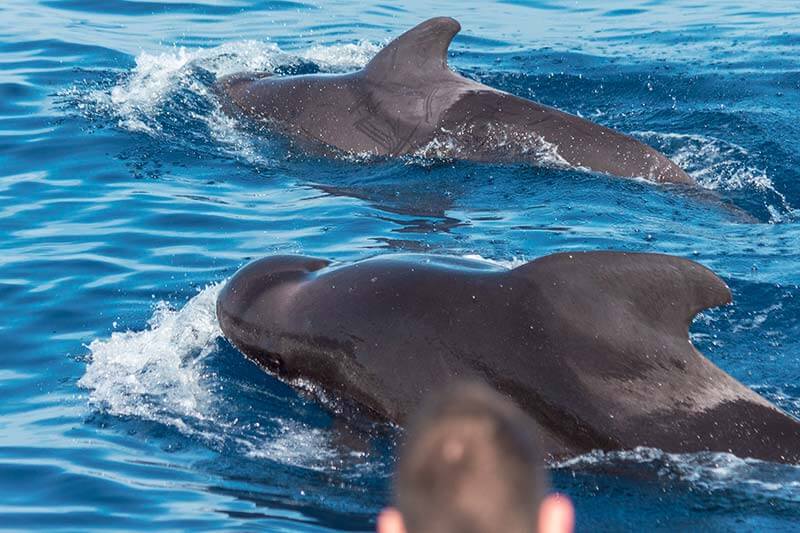
Why do pilot whales beach themselves? According to wildlife experts, it is uncertain as to why these pilot whales beached themselves and continue to do so in other areas, but thorough necropsies are being conducted to better discover this strange phenomenon. Some scientists believe that pods of healthy whales will follow sick individuals into areas that are closer to shore, bringing them into shallow waters and areas where they become beached and stranded.
Although both the hunting and beaching of these whales is heartbreaking, one thing that brings us joy is the remarkable chance we have to spot these cetaceans throughout the year. The El Nino incident in the 1980’s has resulted in more infrequent and rare sightings, but that does not deter us from keeping our hopes up for a greeting with these beautiful creatures.

Captain Dave’s Dolphin and Whale Watching Safari operates seven days a week and all year round, allowing us to keep an eye out for these short-finned pilot whales on just about every calendar day.
Our vessels are set up to get passengers up-close and personal with the wildlife that cruises about our waters, enabling passengers to receive an unforgettable and once in a lifetime experience.
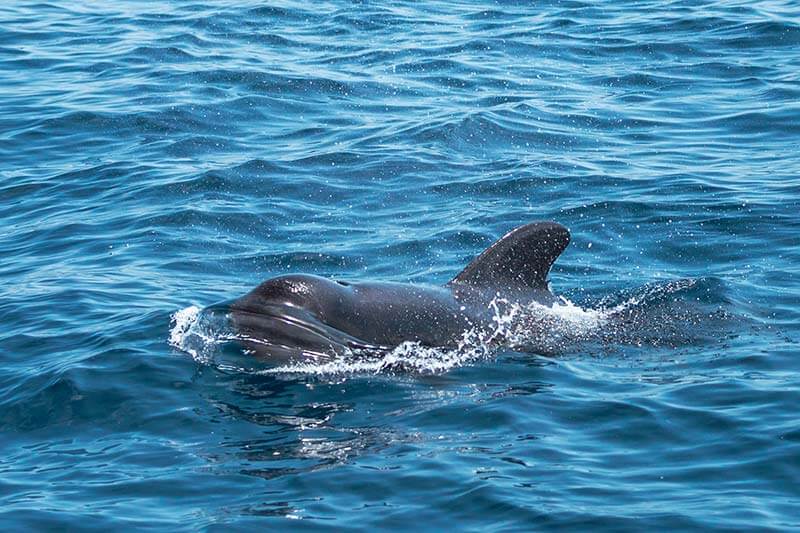
The proximity to these animals and many others, is both exciting and breathtaking, often leading passengers to ask themselves, “are pilot whales dangerous to humans?” Fortunately, Pilot whales are generally not dangerous to humans, and no catastrophic incident or encounter has taken place aboard our whale watching vessels. However, there are inherent risks when interacting with any species of wild animals.
For instance, there has been a documented incident of a swimmer in Hawaii who was brought underwater by a pilot whale after attempting to pet it – resulting in a $10,000 fine on the part of the swimmer. The southern California waters and its residents have never encountered an experience such as this, especially aboard a whale watching vessel, so you can rest assured that your safari will be both safe and satisfactory.
We pride ourselves in always being eco-friendly and never disrespectful to these marine mammals while providing you with a memory you won’t soon forget, especially one in which you may spot these unique pilot whales.
We’d be thrilled to have you join us for an unforgettable, safe, and exciting experience, and hope to see you soon!
